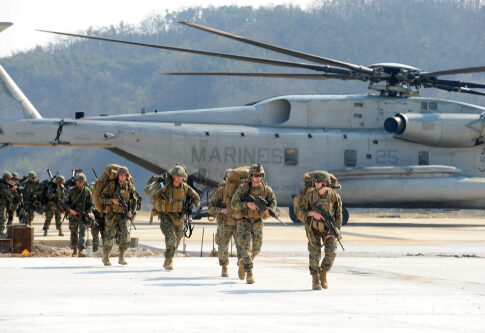Biden’s misfortune has become Trump’s challenge. President Trump’s executive order mandating the transfer of military equipment to local police has sparked debate over potential implications for civil liberties, while supporters argue it strengthens law enforcement capabilities against rising crime. President Trump signed an executive order to increase the flow of military equipment to local law enforcement agencies.
Expanding Police Access to Military Equipment
President Donald Trump has directed federal agencies to expedite the transfer of surplus military equipment to local police departments across the country. The executive order, signed as part of his administration’s law enforcement initiatives, establishes a 90-day deadline for determining how military assets can be distributed to prevent crime in local jurisdictions. While the directive does not specify exact equipment types, similar programs in the past have included armored vehicles, tactical gear, and sophisticated surveillance technology.
The Department of Justice and the Department of Defense are expected to develop the expanded transfer program by July 27. The forthcoming guidelines will detail equipment types available for transfer, eligibility criteria for local agencies, and oversight measures to ensure proper use. Attorney General Pam Bondi and Secretary of Defense Pete Hegseth have been tasked with implementing the order, with input from Homeland Security Secretary Kristi Noem.
Be aware, while all this stuff is going on, the beast system is still in full swing.
Yesterday Trump signed an Executive Order titled "Strengthening and Unleashing America’s Law Enforcement to Pursue Criminals and Protect Innocent Civilians"
This order gives Pam and the… pic.twitter.com/GPCyA7IrGq
— Chadash (@Chadash22) April 29, 2025
Border Emergency and Military Authorization
The police equipment directive coincides with Trump’s declaration of an emergency at the southern border on his first day back in office. As part of his immigration enforcement strategy, Trump has directed officials to evaluate the potential use of the Insurrection Act of 1807, which would allow deployment of active-duty military for domestic law enforcement. This represents a significant expansion of presidential authority, as the Posse Comitatus Act of 1878 generally limits military involvement in domestic policing.
The Insurrection Act has historically been invoked during extraordinary circumstances, including the Civil War, campaigns against the Ku Klux Klan, school desegregation enforcement, and the 1992 Los Angeles riots. The law specifically allows for presidential action when it becomes “impracticable to enforce” federal laws through normal judicial proceedings. Defense Secretary Hegseth and Homeland Security chief Noem are currently assessing the situation and will announce recommendations about potential military deployment.
"This directive significantly expands the federal government's role in local policing, blurring the lines between civilian law enforcement and military operations." https://t.co/HayX1V686f
— Andrea Catalano (@AndreaBz1980) April 30, 2025
Civil Liberty Concerns and Public Response
The executive order has generated substantial concern among civil liberties advocates and some public officials who worry about the increasing militarization of American policing. Critics argue that providing local departments with military-grade equipment could potentially escalate police-citizen encounters and damage community trust. The combination of expanded military equipment transfers alongside considerations of using the Insurrection Act has prompted some commentators to raise questions about potential consequences for civilian oversight.
The order arrives at a time when border crossings are reportedly at a 25-year low, according to administration critics who question the emergency declaration. Legal challenges to both the military equipment transfers and potential Insurrection Act invocation are considered likely by legal experts. The administration maintains these measures are necessary to address what it characterizes as a serious public safety crisis requiring extraordinary measures to protect American communities and secure the nation’s borders.


